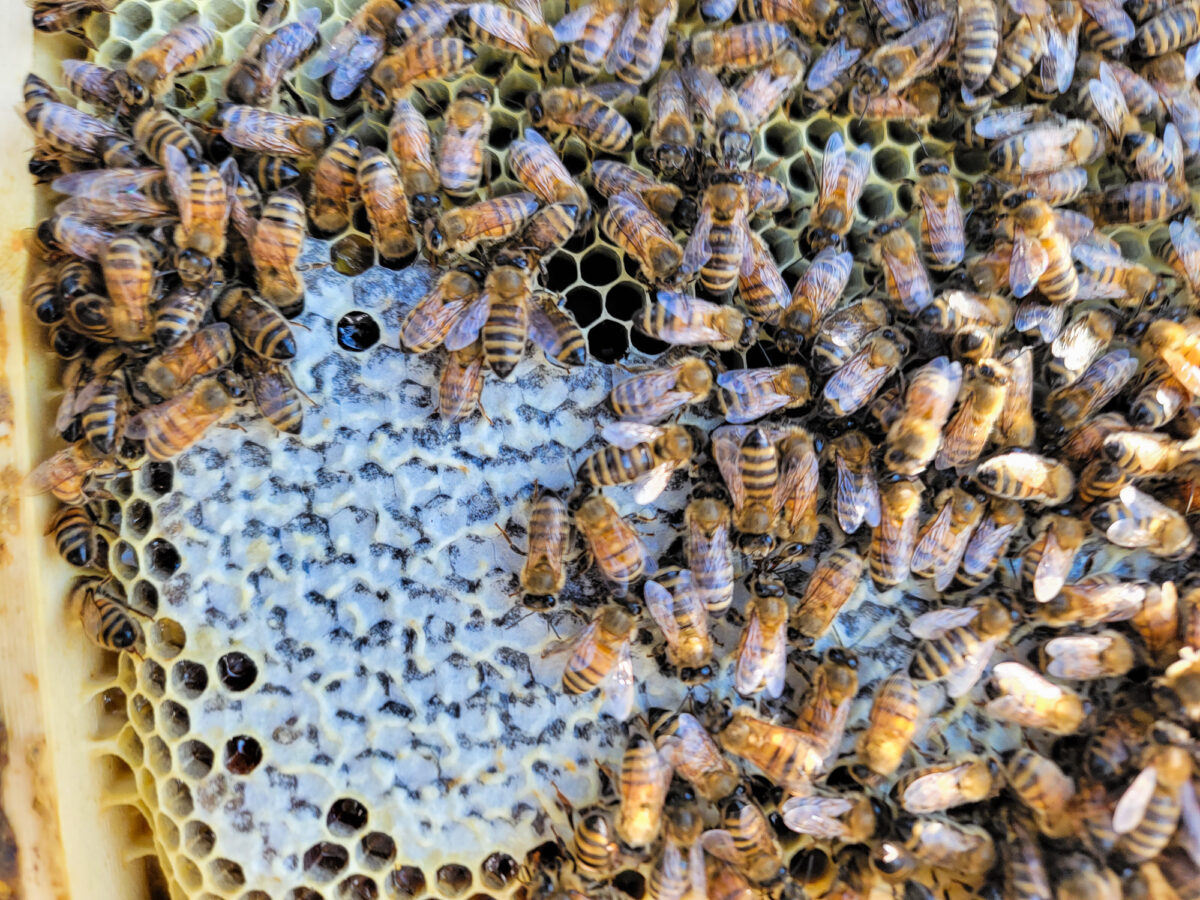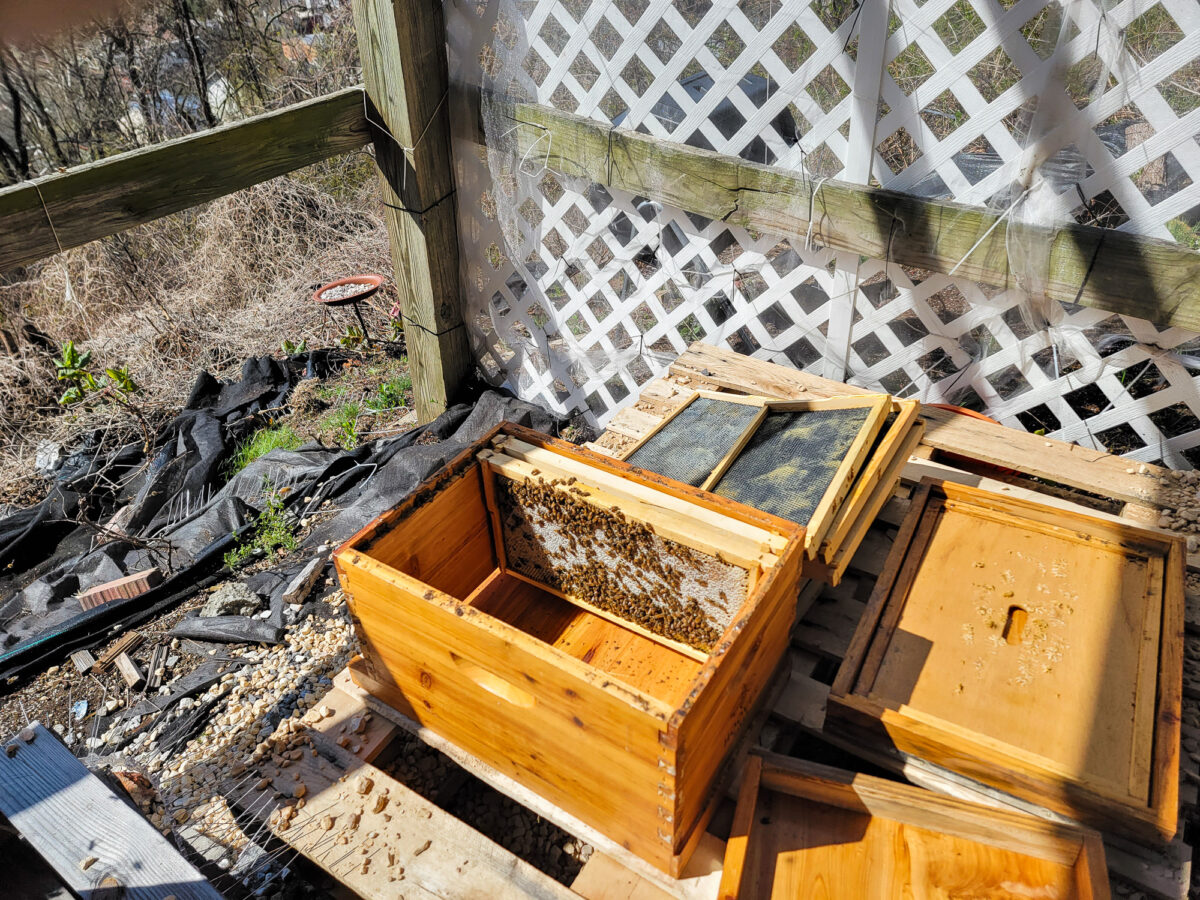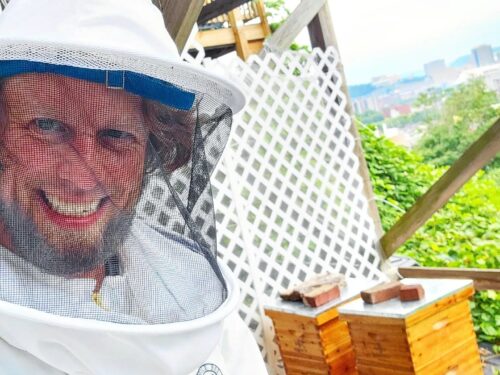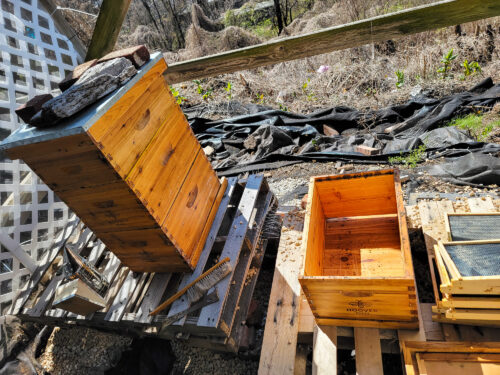Disclaimers: Our site uses demographic data, email opt-ins, display advertising, and affiliate links. Please check out our Terms and Conditions for more information.
In my third year of beekeeping, I thought I was set for a good harvest in early summer.
Two of my bee hives were entering year three. The other two were entering year two. Most of the brood chambers were fully loaded with larva and honey, and my empty supers were on and ready to be drawn and filled out. My mistakes from the previous year seemed to correct themselves and we were in a good position to start the year strong.
I let the bees alone for a bit of time during the nectar flow, came back to check on them later, and I had a problem- the bees were not touching my supers!
As it turns out, this is a common problem, and there are many reasons (and potential solutions) for why your bees are not drawing out supers. So let's talk about what we tried to get them into the chamber we harvest honey from!
Why Do Bees Avoid Drawing Supers?
There are many reasons why your bees may not be touching your supers, and, unfortunately, what case applies to your specific scenario could vary.
From a general perspective, bees do not want to expand their hive if they do not have to. If the brood chambers have ample room for eggs and/or honey, they simply have no incentive to expand. So if you have a new hive, a weak hive, or any other condition where your hive is not bursting at the seams in the brood boxes, your bees may have no need for the additional space despite it being there.
Another reason they may not be drawing supers is because they are not attracted to them, too. There are many theories out there for this one, but bees generally need to be incentivized to go somewhere new. The scent of the queen, the presence of wax and/or honey, or having existing drawn comb are all examples that are floated around here. If they do not like your pre-waxed frames and there is no existing honey/comb/queen aromas, well, they may just avoid your supers until they absolutely have to go there!
A third big one we see a lot is that queen excluders have a common nickname you may not be aware of- honey excluders. Yes, really! Some argue that queen excluders also discourage bees from going up into your supers. Why squeeze through a tight space when you can, you know, not? You know what, we can see it- especially coupled with some of the above factors.
Finally, your bees may not be drawing out a super because you're not in a nectar flow. Drawing out comb is quite an intensive process, with some estimates putting it at requiring 8 lbs of honey for 1 lb of wax. Bees are not going to do this unless they have to (as mentioned in the space issue above), and they generally only do this when food stores are abundant and can be utilized for wax production. So if you're not seeing comb buildout and you're outside of a flow, this may be a reason, too!
These are just a few of many possible reasons why your bees are avoiding drawing out a super. Sadly, it is up to you to try and identify the reason(s) why your hive may not be touching the super.
Depending on what you identify as a possible issue, there are a number of ways you can go about fixing this!
Remove Queen Excluder
One of the most popular recommendations for getting your bees to draw out supers is simply to remove the queen excluder.
This may seem counterintuitive, because we do not want the queen in our supers, but many seasoned bee keepers recommend keeping the queen excluder off your bee hives until the bees have started to move into the super and draw a few frames of comb. After a few frames are drawn, this should be enough incentive for other bees to join in the super, and you can put your queen excluder back on if you so choose.
But, what do you do if the queen starts to move up into a super and lay eggs? Well, that one is simple. Find the queen, move her down into the brood chamber, and put the queen excluder on. The larva that is in the super will hatch, the bees will clean out the cells, and they'll be good to go for honey after that. So get the queen out, add the excluder, and wait a few weeks and you should be fine.
Likewise, there are some theories that queens do not like to walk over frames of honey. I won't begin to speculate why that is, but many beekeepers who choose to go without queen excluders at all tend to note no issue with a queen laying eggs insofar as there are frames of honey in between her and the brood chamber. A natural barrier? We can get behind that, but we still use our queen excluder once frames are starting to be drawn.
- I tested removing the queen excluder with my own hives, and the bees very much started to draw them almost immediately when in nectar flow. That said, if you are not in nectar flow, you may have a wait on your hands.
Put Super Frames in the Brood Box
Another popular recommendation, and one that requires a bit more work, is to move a few super frames into your brood box to allow the bees to draw out the comb. This is often recommended to do on the sides of the brood chambers, where honey is typically stored (and the queen does not frequent), and could be a quick way to get bees onto these frames to draw out comb.
Much like in the above example, once you have a few frames of drawn comb, you can move them back into the super, the bees will likely migrate into the chamber, and during a flow will begin to draw and fill the remaining comb.
Of course, this method presents a number of challenges, especially for those who do not maintain the same size super as they do a brood chamber. You can put a medium super into a deep brood chamber, but you cannot put a deep brood frame into a super. Here, proper storage will be key with any frames that are fully removed from the hive (up to and including freezing any brood frames to prevent buildup of moths and pests).
- I did not pursue this one for my hives purely because I do not have a lot of excess storage space and did not want the hassle of figuring out what to do with my displaced deep frames. This one seems better suited for those who have an abundance of space either in other hives, a freezer, or a 3rd party storage area. But to me, removing the queen excluder for a brief period was easier.
Add More Wax on the Frames
A third popular theory for getting your bees to draw out supers is that, for those who use plastic foundation, they may be turned off from the frames if they do not have enough base wax on them.
As you may likely know, most beekeepers recommend waxing your foundations before installing them into a hive to give the bees essentially a base layer to build off of. Some beekeepers have noted that if there is not enough wax on the frames, bees may avoid them outright and cause a delay in drawing the frames.
So if you had not waxed your frames and your bees are not touching them, especially if you've tried one of the above scenarios, they may simply need an additional coat of wax to entice them during the next flow.
- My frames were waxed pretty well, but for fun I tried to spread some fresh wax on the frames while the supers were on the hive (by taking a scraping from a honey frame in the lower brood chamber). I admit that this one did nothing- the bees cleaned up the wax and just took it back down into the brood chamber. But my original waxing seemed to be enough for them to later draw out the comb once the queen excluders were off as mentioned.
Wait for Nature to Take Its Course
Finally, you could always just wait. Bees will, given enough time, likely grow and expand to fill their brood boxes such that they have no other choice but to get into your supers (or swarm, but let's hope that doesn't happen).
Of course, this likely requires this happening around a good nectar flow, too. So waiting is indeed an option.
The downside with waiting is that you simply have no idea how long it will take. One of my hives went straight into the super, with queen excluder on, during spring flow in its second season and packed most of the frames in just a few weeks. The other three didn't. How long would it take for the bees to fill up the brood box naturally without any outside help to move on to the super is a waiting game and, for me as a novice beekeeper, a guessing game, too.
We're going to guess that if you're reading this you are worried about your bees drawing out your supers and you've likely felt that you've waited long enough. If this is the case, waiting longer is simply a matter of letting the clock run out before the next nectar flow is over.
Can you sit back and wait? Absolutely. How long you have to wait is truly the question. As such, if you are considering the options between doing nothing (waiting) and another method on this list, we may recommend simply trying to remove the queen excluders to give them just a bit more encouragement than they otherwise would have.
So, as you approach the next nectar flow, keep an eye on your bees, see if they're close to filling out the brood chambers, and make it a little bit easier for them to start filling your supers!
Have you found a trick to help get your bees to draw out frames in a super? Comment below to share!
Start an Apiary Today
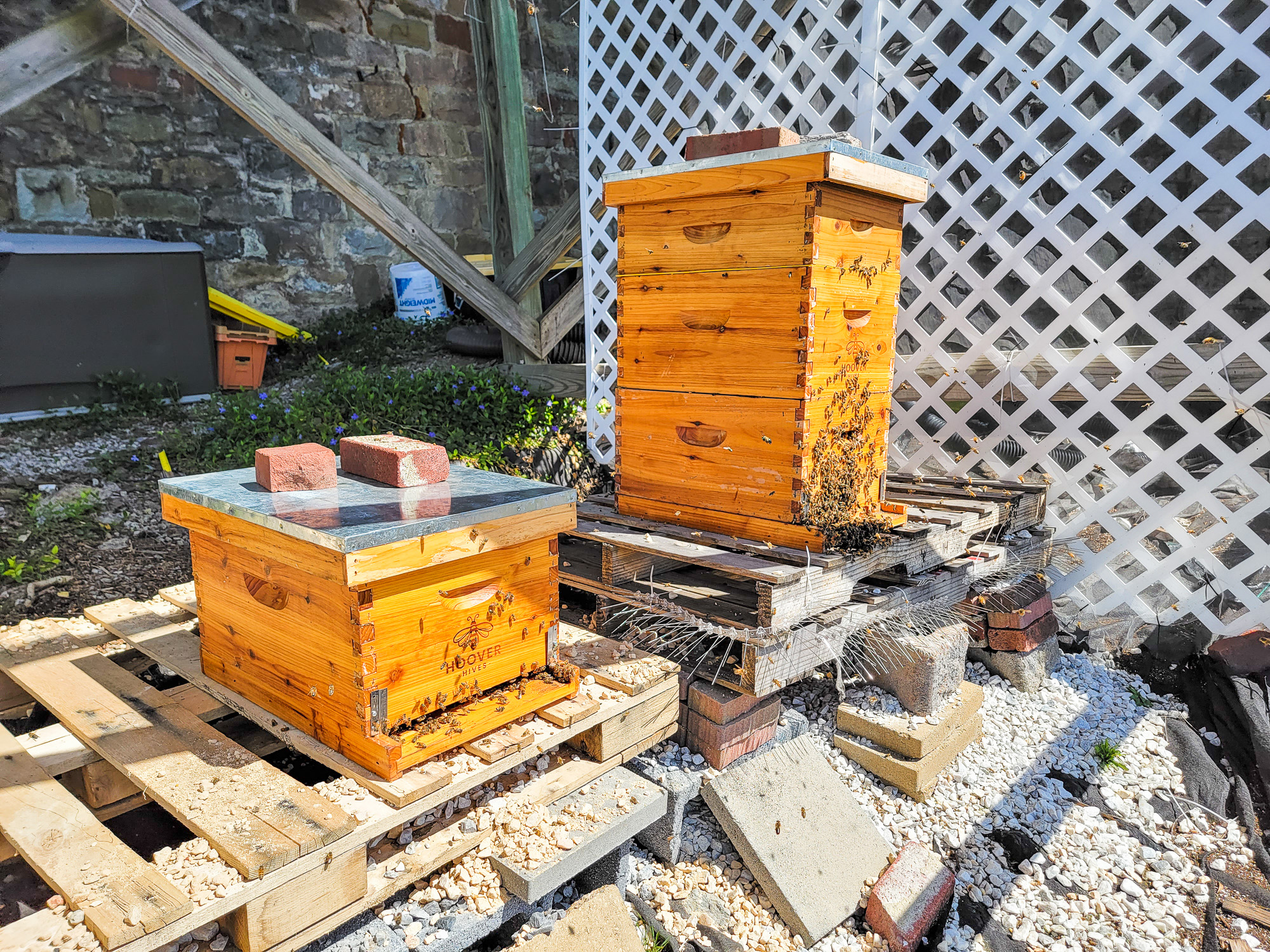
Looking to get into beekeeping? Pick-up preassembled waxed Hoover Hives from Galena Farms. Use discount code HIPSTERHOMESTEADERS to take 5% off your order!


